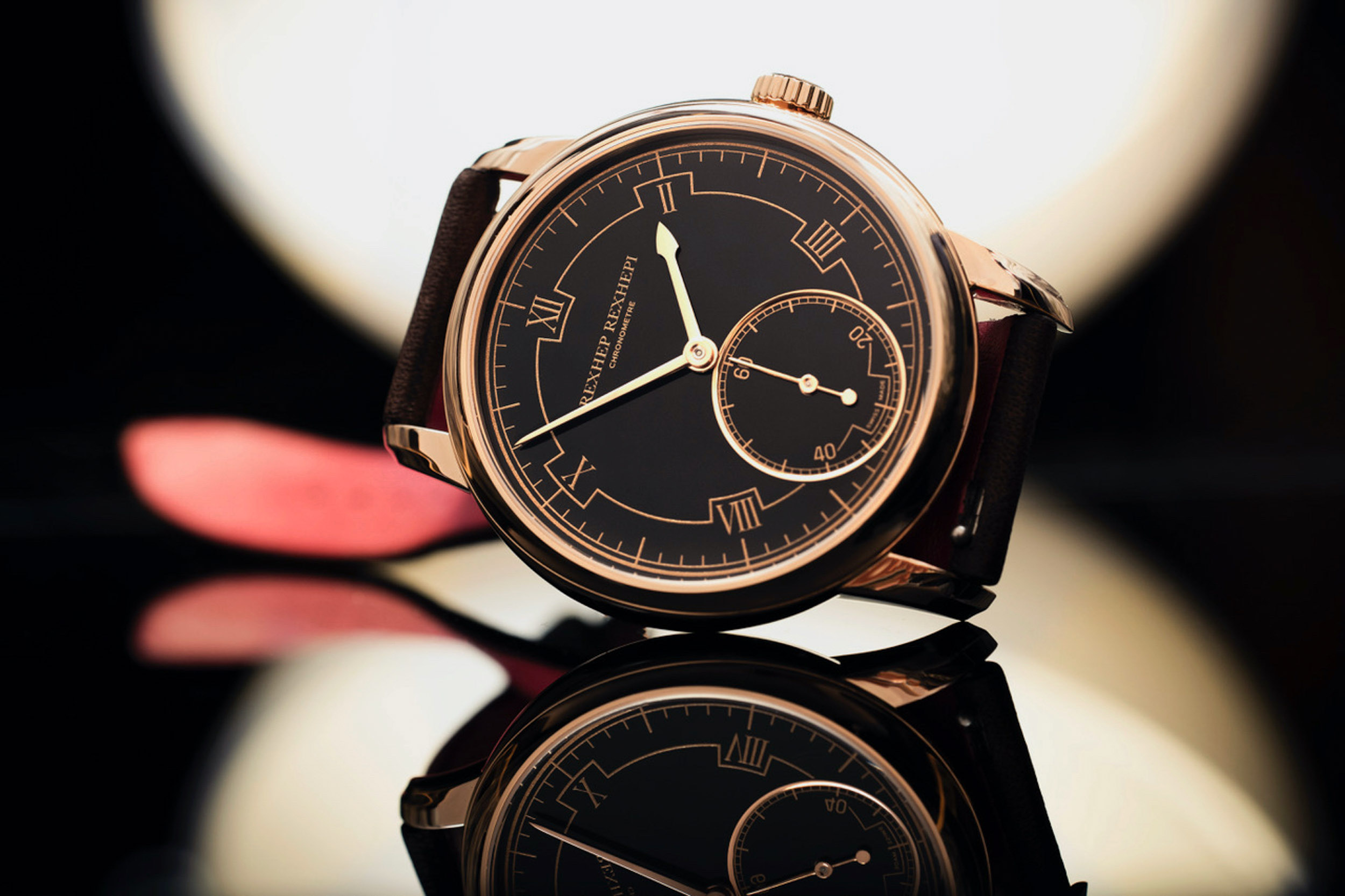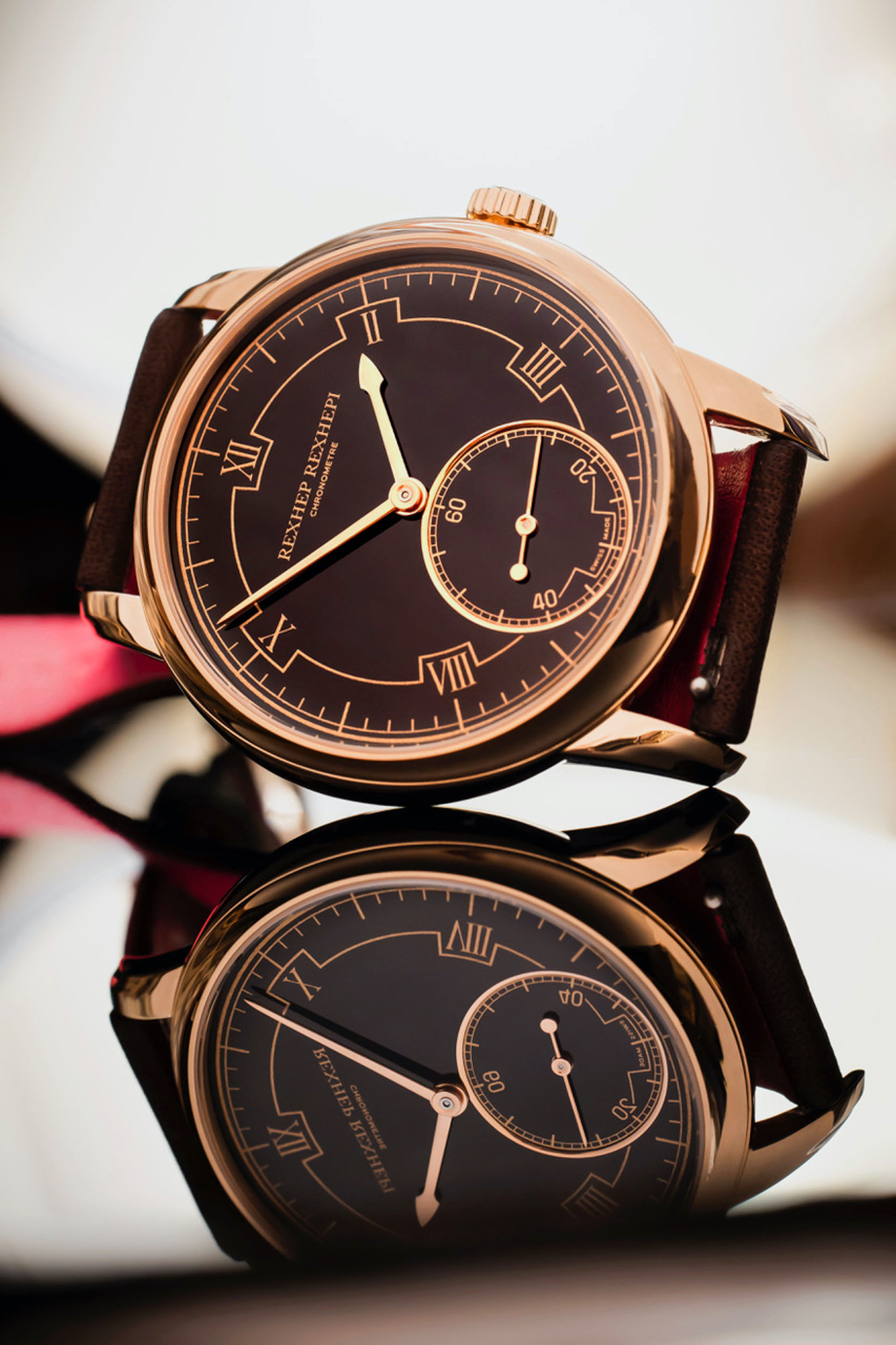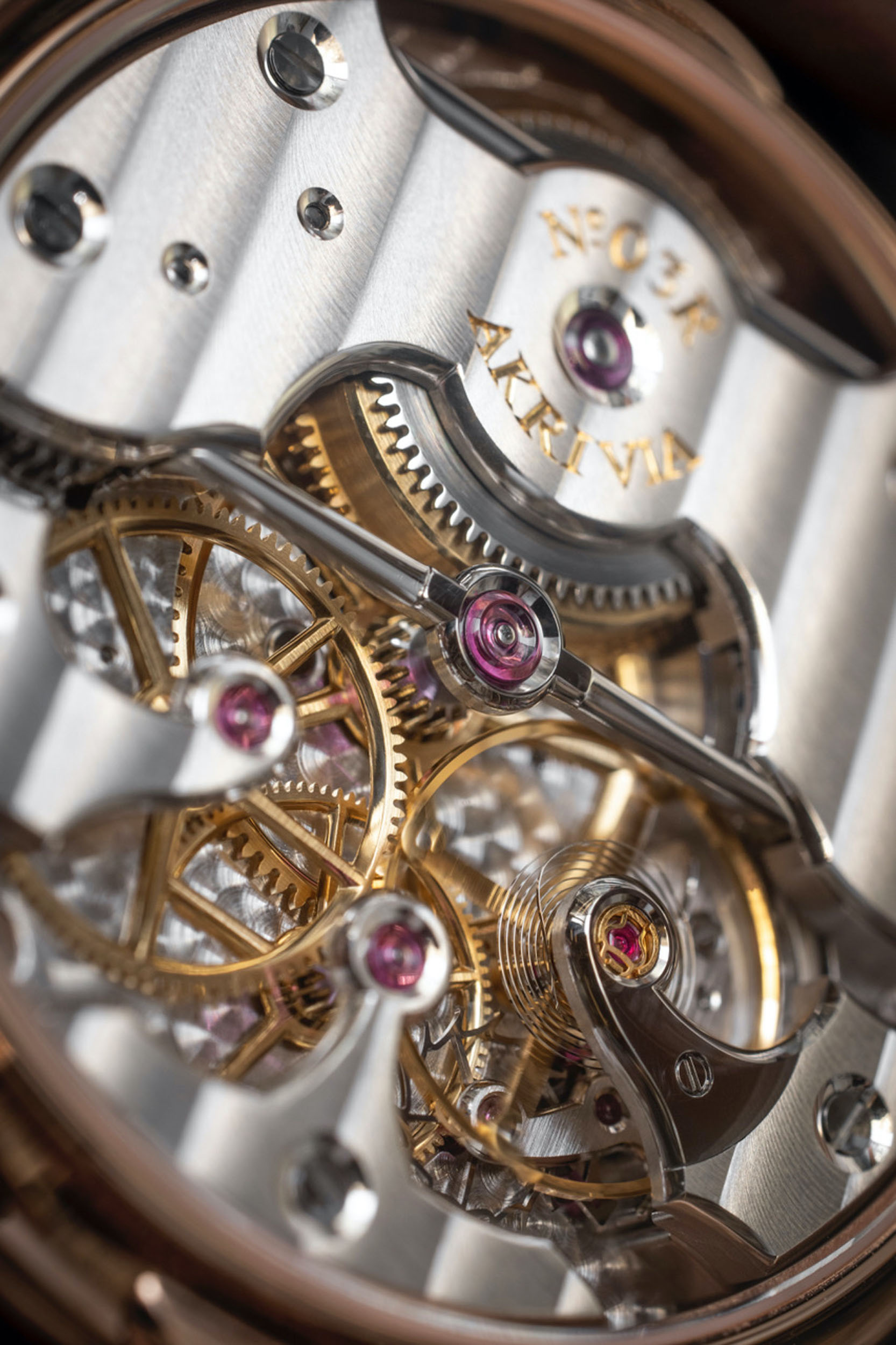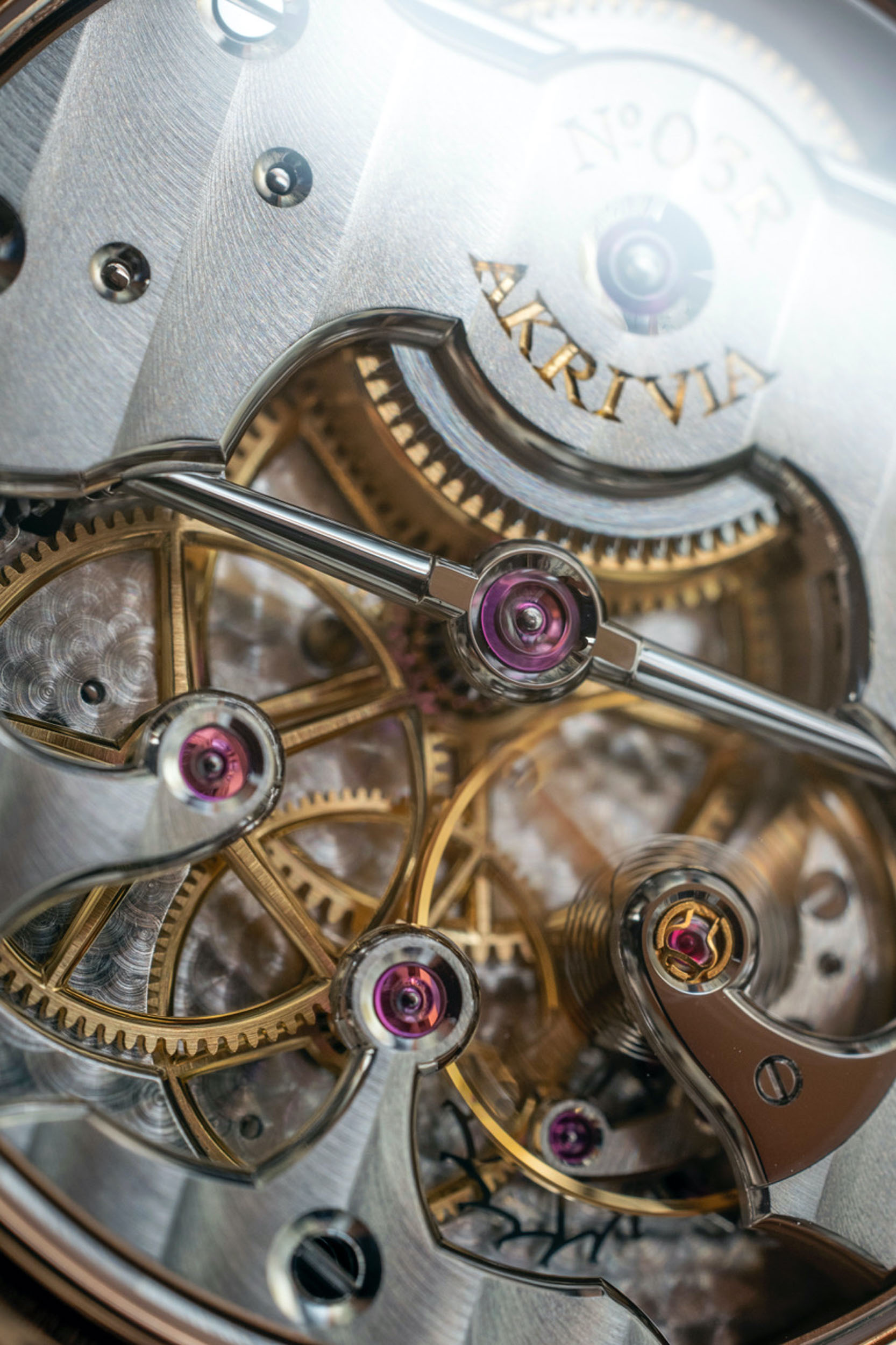Years on the Wrist – Rexhep Rexhepi Chronomètre Contemporain
by Firmin Li
The Rexhep Rexhepi Chronometre Contemporain (or RRCC as it’s affectionally known by fans and owners), is perhaps one of the most coveted and heavily praised artisanal independent watch releases in recent years. So what is it like, you might ask, to own and wear one on a daily basis? Is the ‘magic’ still there? What is there still to add that hasn’t already been said?
As with all artisanal ‘indies’, the people involved are just as important as the watches themselves. It is fitting then, that I first tell my story of acquisition and the people involved before addressing the other matters.
Credit: Haoming Wang (
@h.m.uhren)
The story begins just before Baselworld 2018, in one of his usual unannounced visits to Sydney, I was able to catch up with Mike Tay of The Hour Glass to discuss our shared interest in independent watchmaking and the recent developments in the area. Rather excitedly he mentions that he’s been working together with
Rexhep Rexhepi of Akrivia on something special. Rex, as he mentions, is a classically trained watchmaker (having worked on the benches of Patek Philippe and FP Journe), so it would be fitting, then, for him to create a classically styled and sized watch. Rex, he adds, should also be proud of his work and feature his name on the dial for the first time. Following the discussion, I’m shown a glimpse of an early dial render with Rexhep Rexhepi in golden font and an outline resembling the emblem of the Galactic Empire.
Credit: (
@initialjh)
Fast forward a few months, the RRCC was launched to much acclaim at Baselworld and I hear that a couple of close friends are interested in the watch. It is their interest and subsequent commitments that perhaps is a testament to the appeal and success of the project. For one friend, whose collection is rather diverse (ranging from Richard Milles to Seiko Gundam Tunas) and always focused on practicality and ease of daily wear. He had long admired the work of artisanal independent watchmakers but it was always a case of “oh that’s nice but I don’t think I would be able to wear it everyday”. With the RRCC’s small case (a 38mm watch that perhaps wears closer to a regular 36/37mm watch would) and ability to complement casual/ streetwear, this seemed something more fitting for him than any other piece before. The other friend, was a collector of more avant-garde watches, having previously treasured many of Max Busser’s creations, the RRCC would be his first ‘classically’ styled dress watch. As such, not only was the RRCC a new venture and experience for Rex, but also to two close friends.
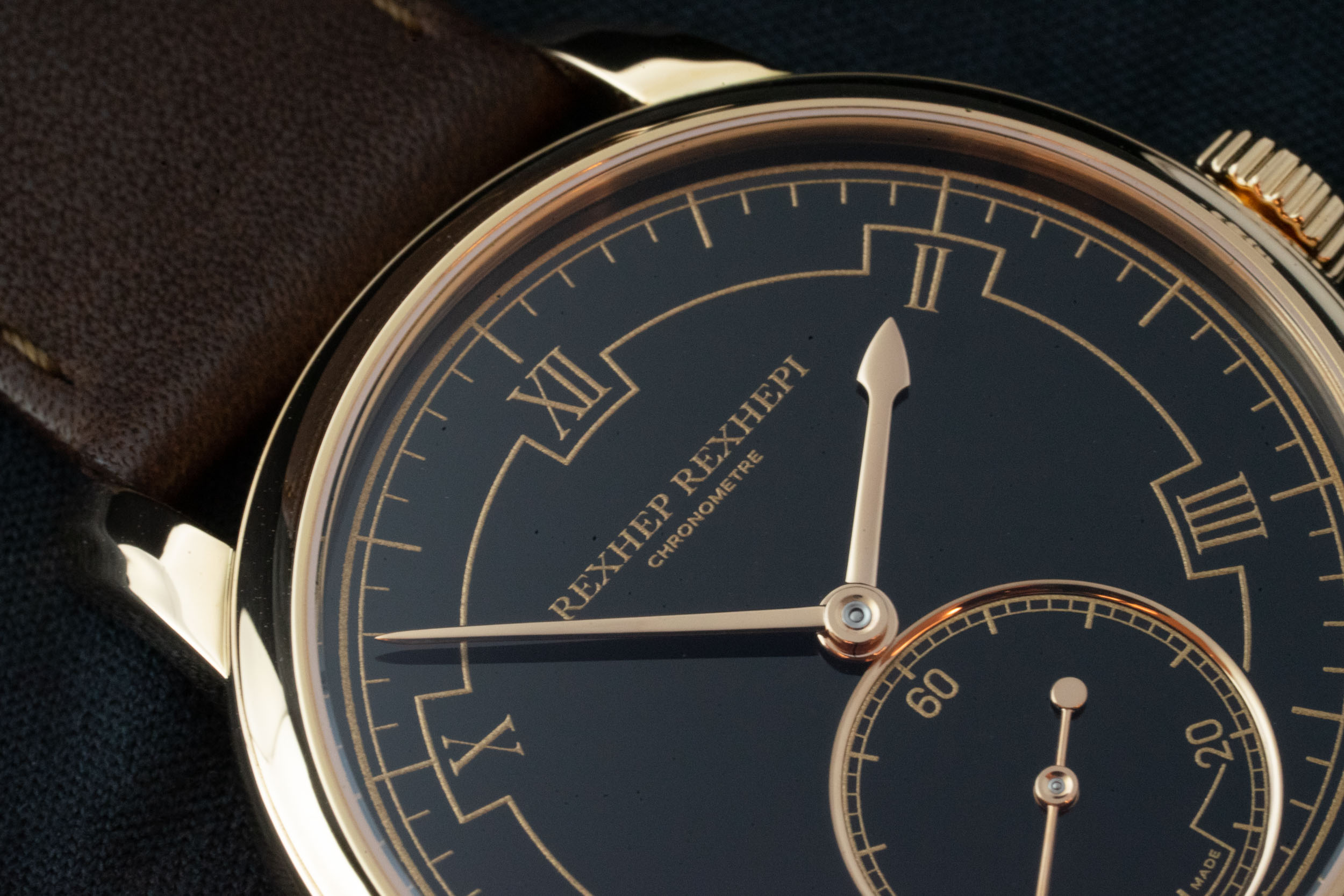
Credit: (
@initialjh)
In late 2018, we are treated a lovely surprise dinner with Rex and Annabelle, organised by The Hour Glass, during their visit to Sydney. In the subsequent days, I got a chance to catch up with Rex at a brewery to better understand his thoughts as well as his ambitions. Rex seemed to be inspired by his mentors in the industry (notably Francois Paul Journe) and was brutally honest about his own work, pointing out the flaws of the prototypes that he had brought along and identifying areas of improvement in both finish and processes. He further explained, that we would be able to see these refinements in the final production pieces. These discussions, slowly morphed into an hour-long lecture on anglage, as well as the perceived difficulties of different types of angles, including the much studied interior angles, as well as sharp exterior angles (horns). He went on to explain that the most difficult areas of finish were where shallow inflection points were created from a convex curve meeting a concave curve. It is evident after this lecture, Rex placed much thought into the architectural layout of his bridges, which allow for a showcase of all the different types of angles including the aforementioned shallow inflection points.
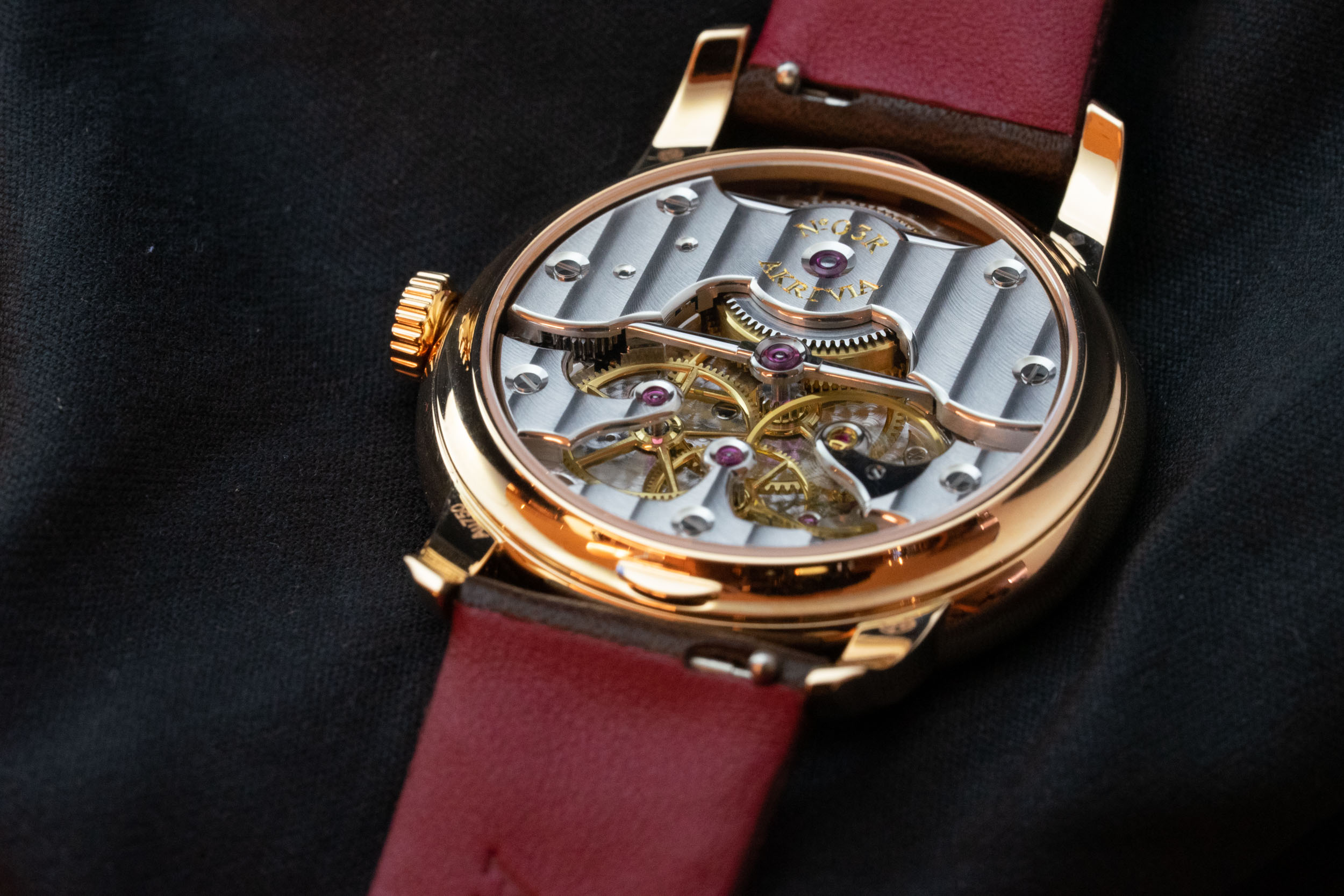
Credit: (
@initialjh)
At the time, Rex mentioned that our watches were ready for testing at Besançon Observatory and should be due for delivery before Christmas. Unfortunately, as we headed into early 2019, delays started to occur in the testing process (something out of Rex’s control) and only two of the three pieces were ready in May. This came to the dismay of my friend, who, being the first to commit to an order, was originally scheduled to be the first to receive the RRCC. His watch would not arrive till later that year.
Despite this, and in good spirits, the friend came along to the presentation and delivery of our pieces. It was during this delivery that we got our first look at production improvements. The most notable included sunken sub-seconds with an additional metallic ring to improve dial depth. The movement, as promised, was vastly refined in its finish and stunning to stare at.
Credit: (
@initialjh)
What about my experience with the watch after a year of ownership? Is the magic still there? I can unequivocally say yes! In the year of ownership, I ended up wearing the watch on most days, and sometimes would exclusively wear it for months on end. The small size and profile of lugs means the watch hugs your wrist in great comfort. Visually, the subtly concave bezel helps to further reduce the apparent size.
Credit: Haoming Wang (
@h.m.uhren)
The RRCC has a few facets and quirks that I find interesting. First, and most prominently, is the texture of the dial. This is perhaps more apparent in black variants which, under most circumstances of indirect light, it appears as a glossy smooth surface, much like a piano. However, once there is direct overhead light (in similar circumstances that make the numerals of the Chronometre Bleu float) you quite evidently see the almost organic grainy textures of the enamel dial, which adds to the charm of the watch. This, coupled with the reflective and very subtly curved profile of the hands, is a joy to behold.
Credit: Haoming Wang (
@h.m.uhren)
Despite being a time-only watch, the RRCC is wonderful to interact with. The well-proportioned crown engages what I like to call the ‘one-minute chronograph’ (zero reset seconds), winds butter smooth, and with a satisfying click. Rather curiously, unlike most other movements, there is no defined stop in the winding stem once the mainspring is wound. Otherwise, other small quirks include a notable lack of Besançon’s famed ‘Viper Head’ seal (as stamped on most watches tested at the Observatory); Rex explains that snakes are deemed unlucky in Albanian culture. Finally, the RRCC seems to feature a rather novel lightweight escape wheel that somewhat resembles Rolex’s Chronergy system. Hopefully this points to further development in this area of watchmaking for Rex.
Credit: Haoming Wang (
@h.m.uhren)
The RRCC then, a project initially conceived to reinvent the Akrivia brand, seems to be a great success and a showcase of the young watchmaker’s ability and determination. The recent collaboration and integration of legendary case-maker Jean-Pierre Hagmann inside the small Genevan Workshop hopefully means further steps will be taken to ensure that all watchmaking processes will eventually occur under the one roof. It will be exciting to witness the developments for Rex, along with his brother Xhevdet, and for the Akrivia brand in the years to come.
Credit: Haoming Wang (
@h.m.uhren)

















